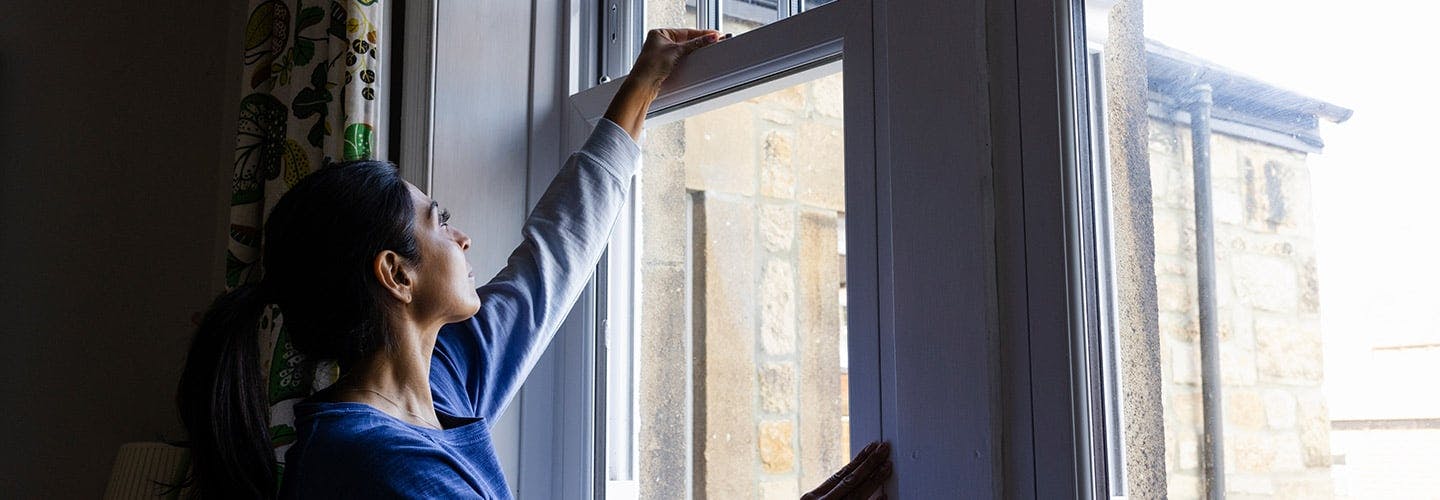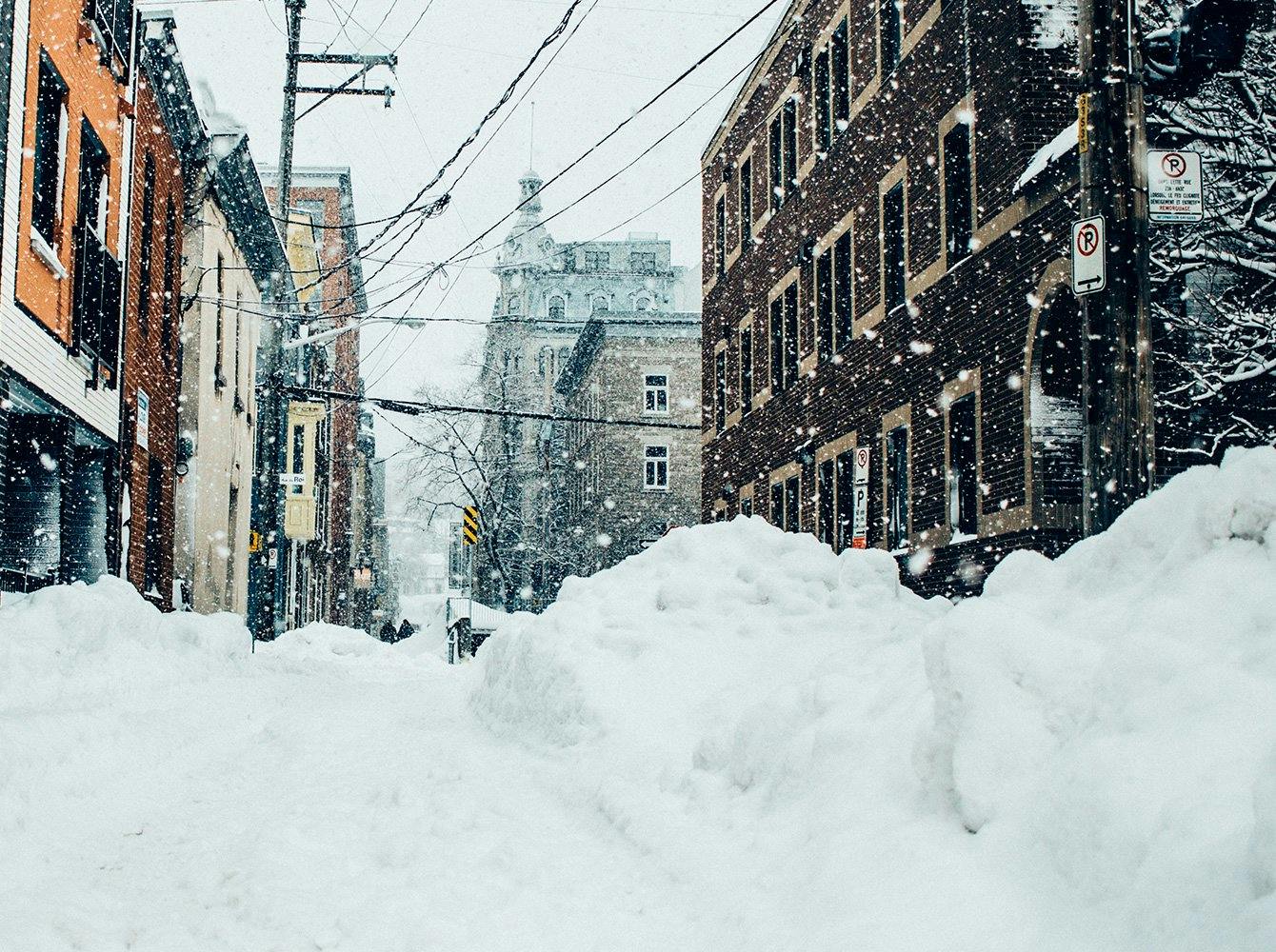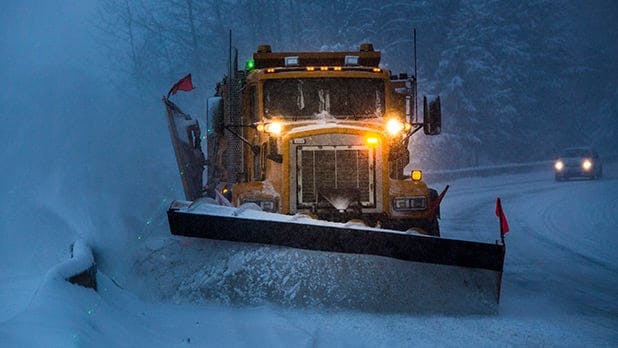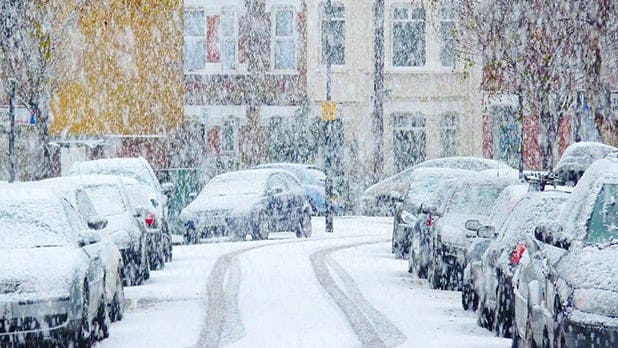How to prepare a home for vacancy in the winter
- Coverage clarity
- Planning ahead
- Homeowners insurance
- Second home insurance

Winter comes with glistening snow and cozy moments spent indoors. However, for homeowners who plan on leaving their houses unoccupied during the winter months, it can also bring worry and potential risks. Leaving a house unoccupied for winter can lead to various issues, from frozen pipes and pest invasions to security threats and expensive repairs. Preparing your home for vacancy during the winter can be a difficult task so we’ve put together this guide with essential tips to keep your property safe and well-maintained throughout the winter.
It’s also a good idea to talk to the VIU by HUB Advisory Team about off-season insurance for some items and ways you can possibly save on your home insurance premiums.
Why should you prepare your unoccupied house for winter?
Leaving a house unoccupied during the winter without proper preparation can lead to significant consequences. The freezing temperatures, snow and ice can cause major damage to many parts of your property, potentially resulting in costly repairs. To avoid this, it’s important to take proactive measures to protect your home.
One big concern is pests and rodents in the winter. When a property is left unattended, it becomes an inviting shelter for unwanted animals seeking warmth and food. Another common concern is frozen pipes; if they burst, they can cause extensive water damage to your home.
Being prepared for emergencies is essential when leaving your house unoccupied. In the event of a severe winter storm or natural disaster, a properly prepared home stands a better chance of withstanding potential damage and keeping your belongings safe while also saving you from making a homeowners claim.
Preparing the exterior of your unoccupied house
Winterizing your landscaping and yard
During the winter months, your garden and outdoor space are exposed to harsh weather conditions that can potentially cause damage. Winterizing your home’s exterior protects your investment and prepares your yard for the return of spring. By taking proactive steps, you can safeguard your plants, trees and outdoor furniture from the freezing temperatures and maintain your curb appeal even during the cold winter months.
- Trimming and pruning – Consider trimming and pruning your plants and trees before winter sets in. Removing dead or damaged branches helps promote healthy growth when spring arrives. Furthermore, strategic pruning can prevent snow and ice buildup on tree branches, reducing the risk of breakage.
- Wrapping fragile plants – A protective layer of burlap or frost cloth shields the foliage from harsh winds and freezing temperatures, helping the plants retain moisture and stay insulated. Wrapping also prevents the branches from becoming brittle and breaking under the pressure of ice and snow.
- Mulching techniques – Applying a thick layer of organic mulch, such as straw, wood chips or leaves, around the base of plants and trees provides an insulating barrier. This helps prevent sudden temperature changes that can be harmful to plant roots. Additionally, the mulch acts as a protective layer against frost heave, which occurs when the soil repeatedly freezes and thaws, pushing the roots upward and potentially damaging them.
- Clearing debris – Accumulated debris can create potential hazards, especially when hidden under snow or ice. Slip and fall accidents become more likely when pathways and walkways are obstructed by debris. Composting or disposing of the collected debris helps maintain a clean and safe environment.
- Storing outdoor furniture – Outdoor furniture and equipment, such as patio sets, grills and gardening tools, are susceptible to structural damage from snow and ice. Store your outdoor items in a secure location, such as a shed, garage or storage unit. If you don't have access to indoor storage space, consider investing in durable, weather-resistant covers to shield your outdoor furniture from the elements.
Securing doors, windows, and entry points
As the winter chill sets in, it’s important to secure all entry points to your home. Properly preparing these areas keeps your home's interior warm and comfortable and also plays a significant role in minimizing heat loss and drafts. By taking steps to secure these openings, you can create a well-insulated and energy-efficient environment.
- Sealing gaps and cracks – To stop cold air from getting in, and your valuable hot air from escaping, use weatherstripping and caulking to seal these openings to your home effectively. Weatherstripping materials, such as rubber, foam or felt, act as a barrier against drafts and provide a tight seal when doors and windows are closed. Taking these steps contributes to a more energy-efficient home, reducing the strain on your heating system and ultimately saving you money on energy bills.
- Reinforcing locks – Reinforcing locks on doors and windows is crucial for maintaining a secure home while it’s unoccupied in the winter. Thoroughly inspect all locks to be sure they are in proper working condition and replace any damaged or weak locks promptly. Consider upgrading to high-quality, modern locks that offer improved protection, including smart locks that allow you to remotely monitor and control access to your home.
Protecting your roof, gutters and downspouts
Winter weather can be harsh on your roof, gutters and downspouts. Snow accumulation and ice dams pose a significant threat to the structural integrity of your home. Proper maintenance and precautions are essential to protect your property and prevent costly repairs.
- Preventing ice dams – For homes prone to ice dams, which occur when melted snow refreezes at the eaves of the roof, preventing water from flowing off the roof and potentially causing water to seep into your home, installing roof heating cables can be a practical solution. These cables are placed along the eaves and gutters, providing a gentle heat source that prevents ice from forming and allows melted snow to flow off the roof more easily. Roof heating cables can be turned on during winter storms and turned off once the snow has cleared, giving you more control over preventing ice dams.
- Roof inspection – Before the winter season arrives, conduct a thorough roof inspection and consider hiring a professional roofing contractor to assess the condition of your roof. They will look for any signs of damage or vulnerability, such as loose or damaged shingles, cracks, or gaps around roof penetrations and any areas that may have deteriorated over time. Replace loose or missing shingles and repair any damaged areas. A well-maintained roof is better equipped to withstand the weight of snow and ice, reducing the risk of leaks and structural problems.
- Gutter maintenance – Gutters and downspouts direct water away from your home's foundation. However, during the winter, they can become clogged with leaves, debris and ice, preventing proper water drainage. This can lead to ice dams. Clean your gutters and downspouts and consider installing gutter guards before winter.
Second home insurance that's designed for you
Preparing the interior of your unoccupied house
Preparing home interiors for vacancy is essential to prevent potential damage and leave a safe and healthy environment for your return. The cold temperatures can lead to freezing pipes, plumbing issues and even mold and mildew. With proper preparation, you can maintain a suitable indoor climate and preserve your home's interior.
Maintaining an appropriate indoor temperature
Maintaining a consistent indoor temperature can prevent freezing pipes and other weather-related problems. Set your thermostat to maintain an indoor temperature above 55 degrees Fahrenheit. This should keep the interior warm enough to prevent pipes from freezing, while still conserving energy and reducing heating costs. Also consider leaving cabinet doors open, especially in the kitchen and bathroom. This practice allows the warm air from the room to reach pipes under sinks and prevent them from freezing.
Winterizing plumbing and water systems
While preparing to leave a house unoccupied for winter, one of the most important things to consider inside the home is water. Some of the greatest dangers for a vacant home come from water damage.
- Draining water lines – Before leaving your house for the winter, turn off the main water supply and drain the water lines throughout the property. Start by shutting off the main water valve, usually located near the water meter. Then, open all faucets and taps to allow any remaining water to drain from the pipes. This step prevents water from freezing and expanding, which can cause pipes to burst.
- Insulating exposed pipes – Insulate any exposed pipes in your home to provide an additional layer of protection against freezing temperatures. Use pipe insulation sleeves or wrap the pipes with heating tape to keep them warm during cold spells. Pay special attention to pipes in unheated areas, such as basements, attics and crawl spaces, as they are particularly susceptible to freezing.
- Using antifreeze – In addition to draining water lines, consider adding antifreeze to toilet bowls, sinks and other drain traps. Antifreeze prevents any remaining water in these fixtures from freezing and causing damage.
Preventing mold and mildew
Mold and mildew thrive in damp, unventilated spaces – a like an unoccupied house during winter. They can cause health problems and are difficult to remove once they’re set in. Fortunately, there are preventative steps that you can take.
- Dehumidifiers and moisture absorbers – Place dehumidifiers or moisture absorbers in areas prone to dampness, such as basements and bathrooms. These devices help to reduce excess moisture in the air, making it less welcoming to mold and mildew.
- Periodic inspections – Schedule periodic inspections to maintain proper ventilation and airflow. This can be as simple as asking a trusted friend or neighbor, or by hiring a house sitter to check on the property regularly.
Security measures for an unoccupied house
Now that you’ve taken the time to prepare your home for vacancy, it would be a shame to lose that hard work. Ongoing security helps you feel sure that your property is protected and that problems can be identified early, before your spring return.
- Notify trusted individuals – Informing neighbors, friends and family members about your absence adds a layer of security to your home. Provide these individuals with emergency contact information and ask them to periodically check on the property so that any issues can be detected early.
- Home security systems and timers – Investing in a reliable home security system can provide peace of mind. Some common security measures include visible security cameras and alarm systems to deter potential intruders and timers for lights and TV to create the illusion of occupancy.
- Forwarding mail and stopping deliveries – A full mailbox or a delivery on the doorstep can give away the fact that your home is unoccupied. Arrange for mail forwarding or holding services to avoid a pileup of mail and pause regular deliveries while you’ll be away.
Preparing your home for vacancy during the winter is a big undertaking, but it’s essential in order to keep your property protected, safe and in good condition. By addressing the exterior, interior and security measures, you can feel confident that you’ve done your part to avoid potential risks and damages. Taking these proactive steps will not only save you money on energy bills but also provide you with peace of mind while you’re away. Being well-prepared is the key to a worry-free winter season. So, take action and follow the provided tips to safeguard your property during the colder months.
A panoramic outlook on
all things insurance
The VIU Point is here to help you make sense of it all, so you can confidently compare auto insurance quotes and make the best policy decisions.


